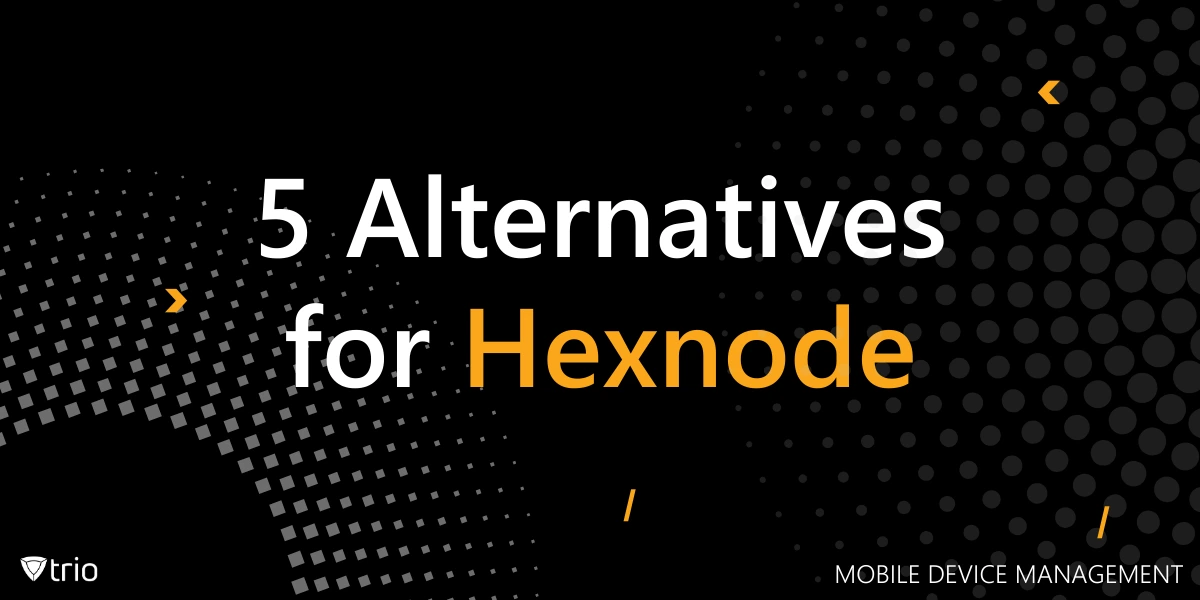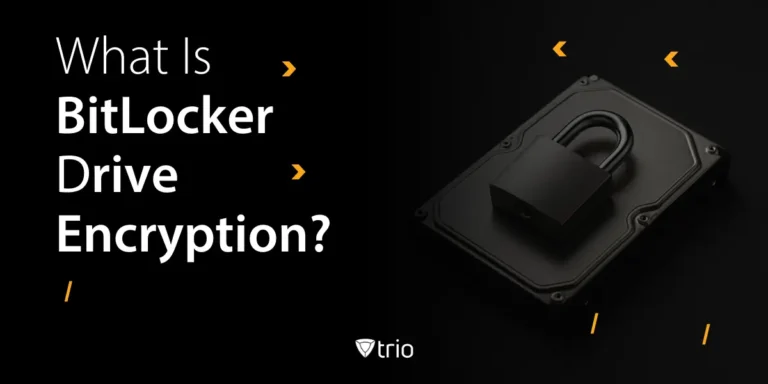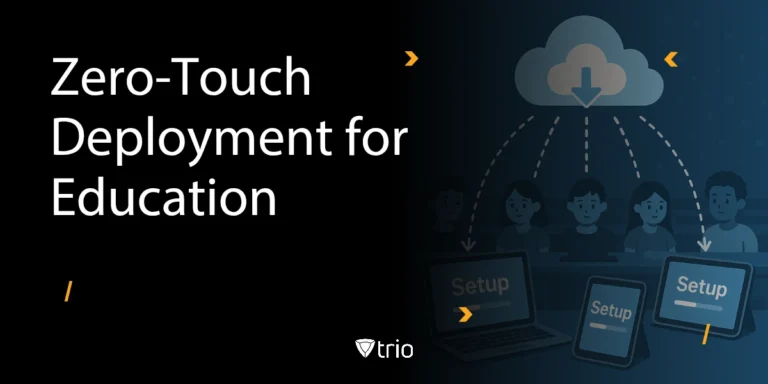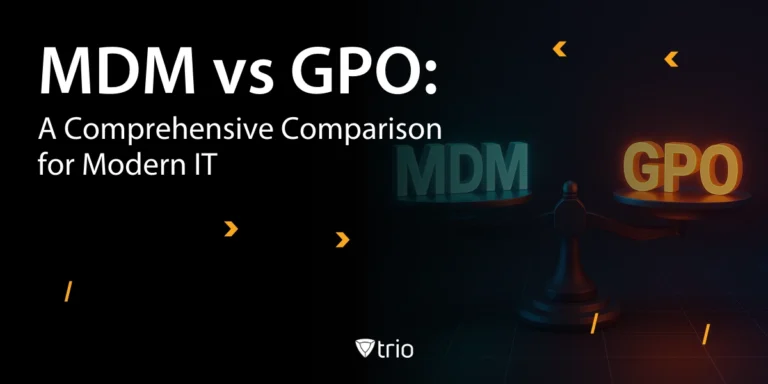Hexnode has established itself as a reliable Mobile Device Management (MDM) solution for organizations that need to manage and secure devices across various platforms. However, as IT environments become more complex, some organizations may find that Hexnode doesn’t fully align with their evolving needs, especially in areas like advanced automation, in-depth reporting, or integration flexibility. Whether you're managing a growing fleet of devices or seeking a more specialized solution for identity management or compliance, there are various questions to be asked before buying enterprise MDM products.
This guide introduces five top Hexnode alternatives for 2025, each offering a distinct set of features tailored to modern IT demands. From unified endpoint management to automated compliance and multi-OS support, these solutions provide IT administrators with the tools they need to stay ahead of device management challenges. Whether you're upgrading your current MDM or switching due to limitations with Hexnode, the platforms listed here are worth a closer look.
1. Trio – Unified, Automated MDM for Multi-Platform Environments
Trio is a modern Mobile Device Management (MDM) platform designed to simplify IT operations across diverse device ecosystems. Unlike Hexnode, which has limitations in Linux support and scalability for large enterprises, Trio offers comprehensive support for macOS, iOS, Android, and Windows platforms, making it ideal for organizations with mixed-device environments. Its intuitive interface and robust feature set cater to businesses seeking a scalable and secure solution for device management.
One of Trio's standout features as one of the Best Hexnode UEM alternatives is its automation capabilities. The platform streamlines device onboarding and offboarding processes, reducing manual workload for IT teams. Automated compliance enforcement ensures that devices adhere to organizational policies and industry regulations, such as GDPR, HIPAA, and SOC 2. Additionally, Trio's real-time monitoring and reporting tools provide valuable insights into device performance and security status.
Pros:
- Supports macOS, iOS, Android, and Windows devices
- Automated onboarding/offboarding and compliance enforcement
- Advanced security features, including real-time threat detection
- Competitive pricing with a 14-day free trial
Cons:
- Smaller market presence compared to established MDM providers
- Some advanced features may require additional configuration
2. Microsoft Intune – Comprehensive Endpoint Management
Microsoft Intune is a cloud-based endpoint management solution that monitors, manages, and secures a wide range of devices, including mobile devices, desktop computers, and virtual endpoints. The platform integrates seamlessly with other Microsoft services, such as Azure Active Directory and Microsoft Defender for Endpoint, providing a unified approach to device and application management. Intune's centralized console allows IT administrators to deploy policies, manage applications, and monitor compliance across all devices.
One of Intune's strengths is its application management capabilities. IT teams can easily deploy, update, and remove applications across devices, ensuring that users have access to the tools they need while maintaining security protocols. Additionally, Intune's automated policy deployment enables organizations to enforce security settings and configurations consistently, reducing the risk of non-compliance.
However, Intune has some limitations. Its support for non-Microsoft operating systems is not as robust, and third-party integrations can be limited. Additionally, the initial setup of policies can be complex, especially for organizations new to the platform. Despite these challenges, Intune remains a powerful tool for organizations heavily invested in the Microsoft ecosystem.
Pros:
- Seamless integration with Microsoft services
- Comprehensive application and policy management
- Real-time monitoring of endpoint devices
- Enhanced security through mobile threat defense integration
Cons:
- Limited support for non-Microsoft operating systems
- Restricted third-party integrations
- Complex initial policy setup
3. ManageEngine Endpoint Central – Unified Endpoint Management and Security
ManageEngine Endpoint Central is a unified endpoint management and endpoint protection suite that helps IT enterprises manage, audit, and secure various endpoint devices. The platform offers a range of features, including automated patching, asset intelligence, remote troubleshooting, data security, and ransomware protection, all accessible from a single console. Endpoint Central's comprehensive approach ensures that IT teams can maintain control over their infrastructure while enhancing security measures.
One of the platform's notable features is its robust reporting capabilities. IT technicians can generate custom reports on their managed IT network, providing insights into device compliance, software inventory, and system health. These reports aid in decision-making and help organizations maintain regulatory compliance.
Despite its strengths, Endpoint Central is more Windows-centered, which may pose challenges for organizations with diverse operating systems. The platform's configuration deployments could benefit from improved scheduling flexibility, and the remote control interface can be clunky when changing screens during remote access. Nevertheless, Endpoint Central remains a solid choice for organizations seeking a comprehensive endpoint management solution.
Pros:
- Comprehensive reporting capabilities
- Compatibility with several business applications
- Automated patch management
- Robust security features
Cons:
- More Windows-centered, less support for diverse OS
- Configuration deployments could benefit from improved scheduling flexibility
- Clunky remote control interface

4. Scalefusion – Streamlined Multi-Platform Device Management
Scalefusion is a versatile Unified Endpoint Management (UEM) solution that offers comprehensive device management capabilities across various operating systems, including Android, iOS, Windows, macOS, Linux, and Chrome OS. This broad OS support makes it an excellent choice for organizations with diverse device ecosystems. Scalefusion's intuitive interface and robust feature set cater to businesses seeking a scalable and secure solution for device management.
One of Scalefusion's standout features is its kiosk mode, which allows organizations to lock devices into specific applications or functionalities. This is particularly useful for businesses deploying devices for dedicated purposes, such as point-of-sale systems or digital signage. Additionally, Scalefusion offers remote troubleshooting capabilities, enabling IT teams to diagnose and resolve issues without physical access to the devices.
Scalefusion offers a competitive pricing model with a free trial available for new users. This trial allows organizations to explore Scalefusion's features and assess its suitability for their needs without any financial commitment. The platform's combination of multi-platform support, kiosk capabilities, and robust security features makes it a compelling alternative to Hexnode for businesses seeking a comprehensive UEM solution.
Pros:
- Supports Android, iOS, Windows, macOS, Linux, and Chrome OS devices
- Kiosk mode for dedicated device functionalities
- Remote troubleshooting capabilities
- Robust security features, including geofencing and compliance management
Cons:
- Some users report limitations in custom app storage
- Remote cast sessions may experience performance issues
5. IBM MaaS360 – AI-Driven Endpoint Management
IBM MaaS360 is a comprehensive Unified Endpoint Management (UEM) solution that leverages artificial intelligence to enhance device management and security. The platform supports a wide range of devices, including laptops, desktops, mobile devices, and IoT endpoints, across various operating systems such as Windows, macOS, iOS, and Android. MaaS360's integration with IBM's Watson AI provides administrators with real-time insights and analytics, enabling proactive threat detection and response.
One of MaaS360's standout features is its AI-powered security capabilities. The platform's AI Advisor offers contextually relevant security insights, helping IT teams identify vulnerabilities and enforce compliance policies effectively. Additionally, MaaS360's risk-based conditional access ensures that only compliant devices can access corporate resources, enhancing overall security posture.
However, MaaS360 has some limitations. The platform lacks native remote control capabilities, requiring third-party applications for remote troubleshooting. Additionally, while the reporting features are comprehensive, customization options are limited. Despite these drawbacks, MaaS360 remains a strong contender for organizations looking to leverage AI-driven insights for endpoint management.
Pros:
- AI-powered security insights with IBM Watson integration
- Risk-based conditional access controls
- User-friendly, task-oriented management console
- Extensive integration capabilities with existing infrastructure
Cons:
- No native remote control; relies on third-party applications
- Limited customization options for reporting
Conclusion
As IT environments continue to evolve, it's essential for businesses to reevaluate their technology stack and ensure their tools can keep up with changing demands. While Hexnode remains a trusted name in the MDM space, it may not be the best fit for every organization, especially those requiring broader OS support, deeper automation, or AI-driven insights. That’s where exploring Hexnode alternatives becomes a smart move for forward-thinking IT teams.
Ultimately, the best MDM solution is one that not only supports your current IT needs but also scales with your future goals. If you're looking for an intuitive, automated, and multi-platform alternative to Hexnode, Trio stands out as a modern, flexible solution. Start your free trial with Trio today or use a demo account and discover how it can transform your device management strategy.
Get Ahead of the Curve
Every organization today needs a solution to automate time-consuming tasks and strengthen security.
Without the right tools, manual processes drain resources and leave gaps in protection. Trio MDM is designed to solve this problem, automating key tasks, boosting security, and ensuring compliance with ease.
Don't let inefficiencies hold you back. Learn how Trio MDM can revolutionize your IT operations or request a free trial today!





